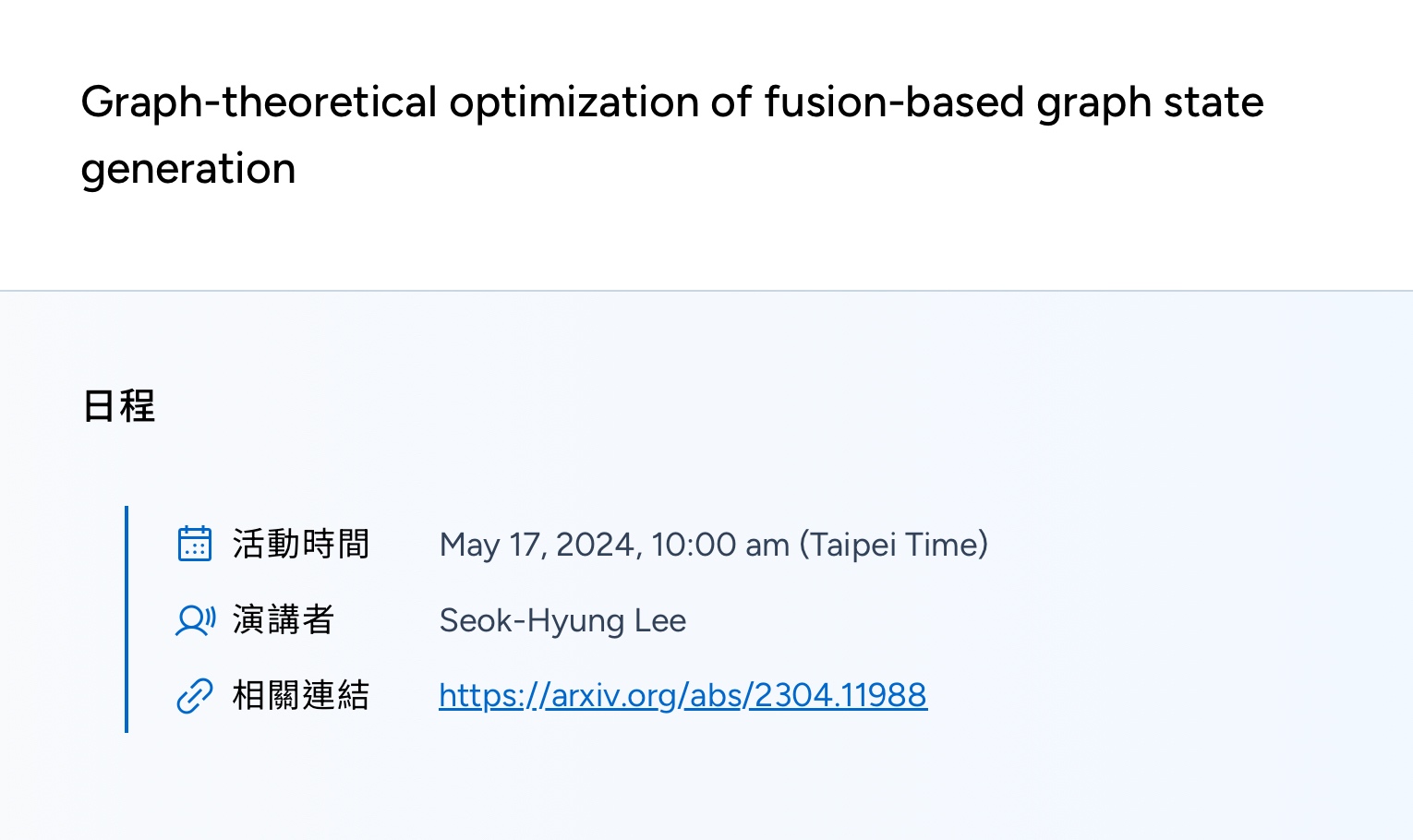
Graph-theoretical optimization of fusion-based graph state generation
Schedule
Date
May 17, 2024, 10:00 am (Taipei Time)
Speaker
Seok-Hyung Lee
Reference
Abstract
Graph states are versatile resources for various quantum information processing tasks, including measurement-based quantum computing and quantum repeaters. Although the type-II fusion gate enables all-optical generation of graph states by combining small graph states, its non-deterministic nature hinders the efficient generation of large graph states. In this work, we present a graph-theoretical strategy to effectively optimize fusion-based generation of any given graph state, along with a Python package OptGraphState. Our strategy comprises three stages: simplifying the target graph state, building a fusion network, and determining the order of fusions. Utilizing this proposed method, we evaluate the resource overheads of random graphs and various well-known graphs. Additionally, we investigate the success probability of graph state generation given a restricted number of available resource states. We expect that our strategy and software will assist researchers in developing and assessing experimentally viable schemes that use photonic graph states.
Personal information
Dr Seok-Hyung Lee is a research fellow in the Quantum Science Group at the University of Sydney, which is a team led by Prof. Stephen Bartlett and Prof. Andrew Doherty. He did his PhD in 2023 at Seoul National University in Seoul, South Korea under the supervision of Prof. Hyunseok Jeong. Dr Lee's main research interest is quantum error correction and photonic quantum computing, including measurement/fusion-based quantum computing, graph state generation, and 2D topological codes. Recently, he has been leading a project on constructing a quantum computing architecture using color codes and developing their decoding scheme.
Post Date
May 17, 2024
Centers
Topic


